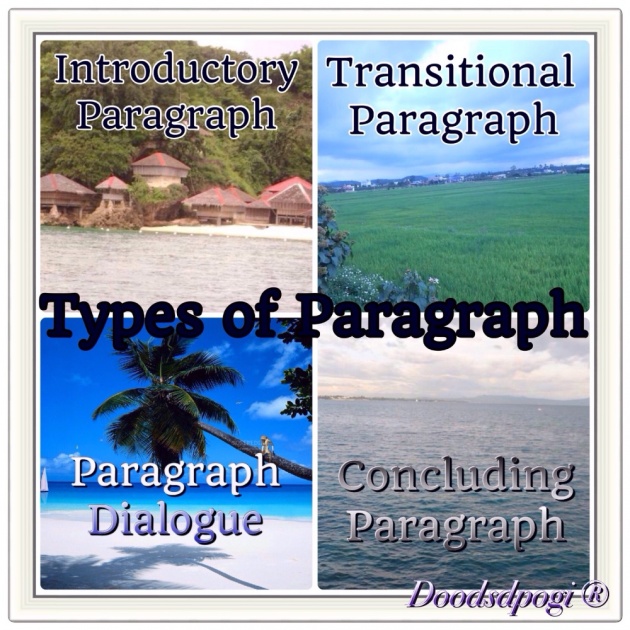
Paragraph Defined
What is a paragraph?
A paragraph is a series of sentences that constitute and developing into one topic. The word paragraph is from two Greek word that were combined together to make a new of of different meaning. The first word is "para" which means beyond or beside and "graphein" that means to write. That's how paragraph derived from and what it means.
At present times a paragraph is being defined as a compact unit of related sentence or sentence only, developing a single idea or a specific part of a larger topic. In a well written paragraph, the sentences that compose it, closely related in meaning and are held together by a topic idea, either expressed in a topic sentence of implied.
The paragraph is the structure unit of a composition. The paragraph in a good composition are closely related and present the successive stages of thoughts or feeling that constitute the organic whole
As a physical unit on the page, a paragraph is conventionally indicated by an indention of the first line and a half-inch to an inch in the left margin. Indentions are valuable signs of the divisions of the thoughts within the whole composition. They indicated forward movements from one phrase of the subject to the next.
What are the uses of paragraph?
Here are the primary functions of paragraph:
1. Paragraph develops an idea or impression.
Paragraph is the vehicle of ideas. It may develop a single idea and is called independent paragraph. Newspaper, editorials, columns and advertisements often make use of independent paragraphs.
2. Paragraph assists in the communications of ideas by setting off a single topic which is developed or by distinguishing clearly between the separate parts of the longer composition.
3. Paragraph facilitates the reader's understanding by making the structure and development of the ideas easily evident.
4. Paragraph enables the writer to pursue clearly the development of his thoughts and see the progress he is making.
5. Paragraph makes clear to the reader the development of ideas by furnishing him with signs or markers so that he will be able to understand both the parts and the whole which they constitute.
There are also special purposes of paragraphs, although their usual function is to develop idea or impression. Here are some of special purposes of paragraph:
a) Paragraph introduces a topic.
b) Paragraph indicates transition.
c) Paragraph records a dialogue.
d) Paragraph concludes or summarizes a discussion.
What are the types of paragraphs?
1. Introductory Paragraph
This may introduce a topic. A good introduction attracts the readers and lead them to read more.
2. Transitional Paragraph
This indicates a movement from one phase of discussion to the next phase. It also sum up the discussion and prepare the reader for the next topic, or point out as special method of explanation which is to be used, or to do a combination of those things.
3. Paragraph Dialogue
This is to record a dialogue. Conventionally, a separate paragraph is used for each speech or for the speech and explanatory insertion. Longer narration between speeches may be included with a speech or paragraph separately.
4. Concluding Paragraph
This may conclude or summarize a discussion.



